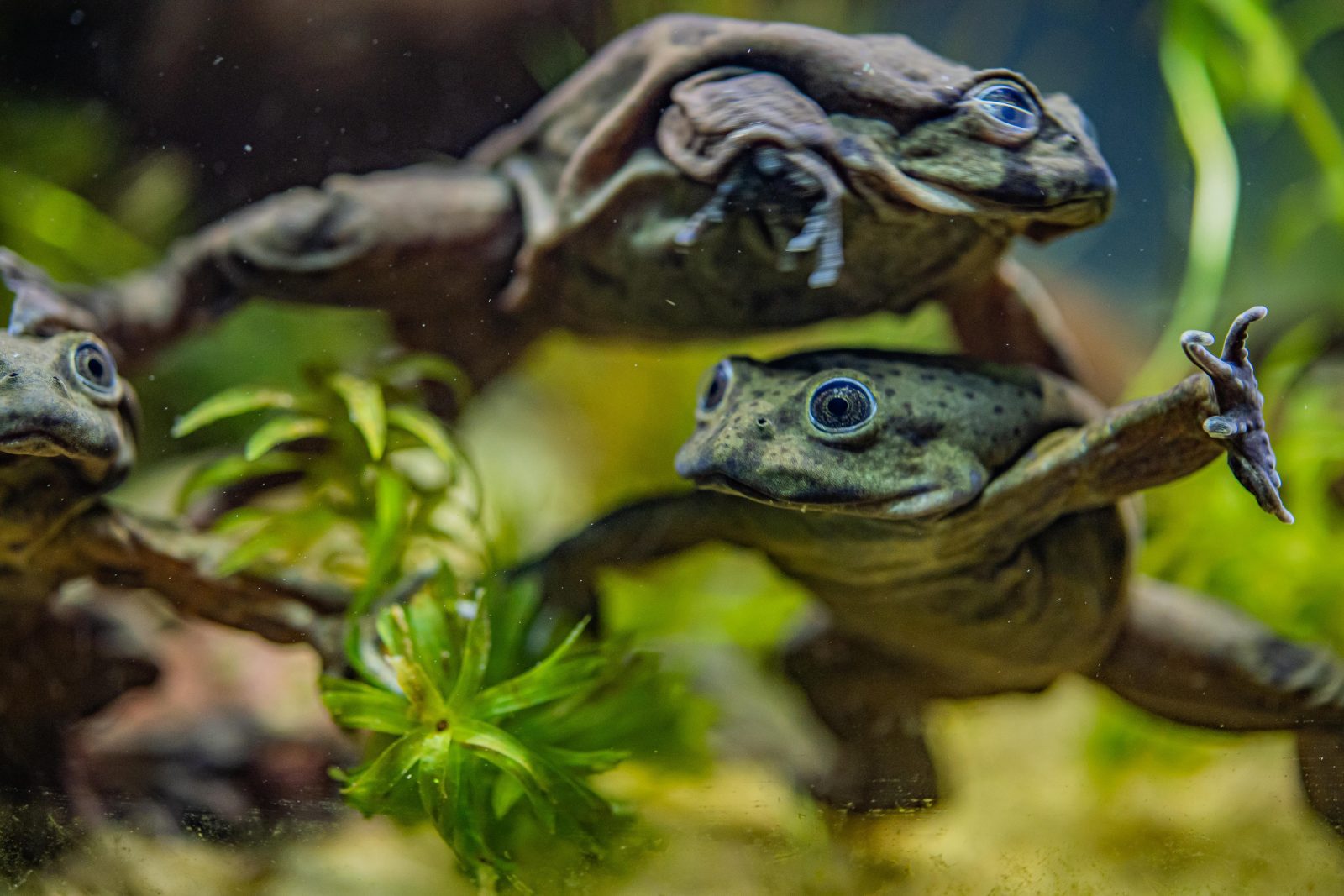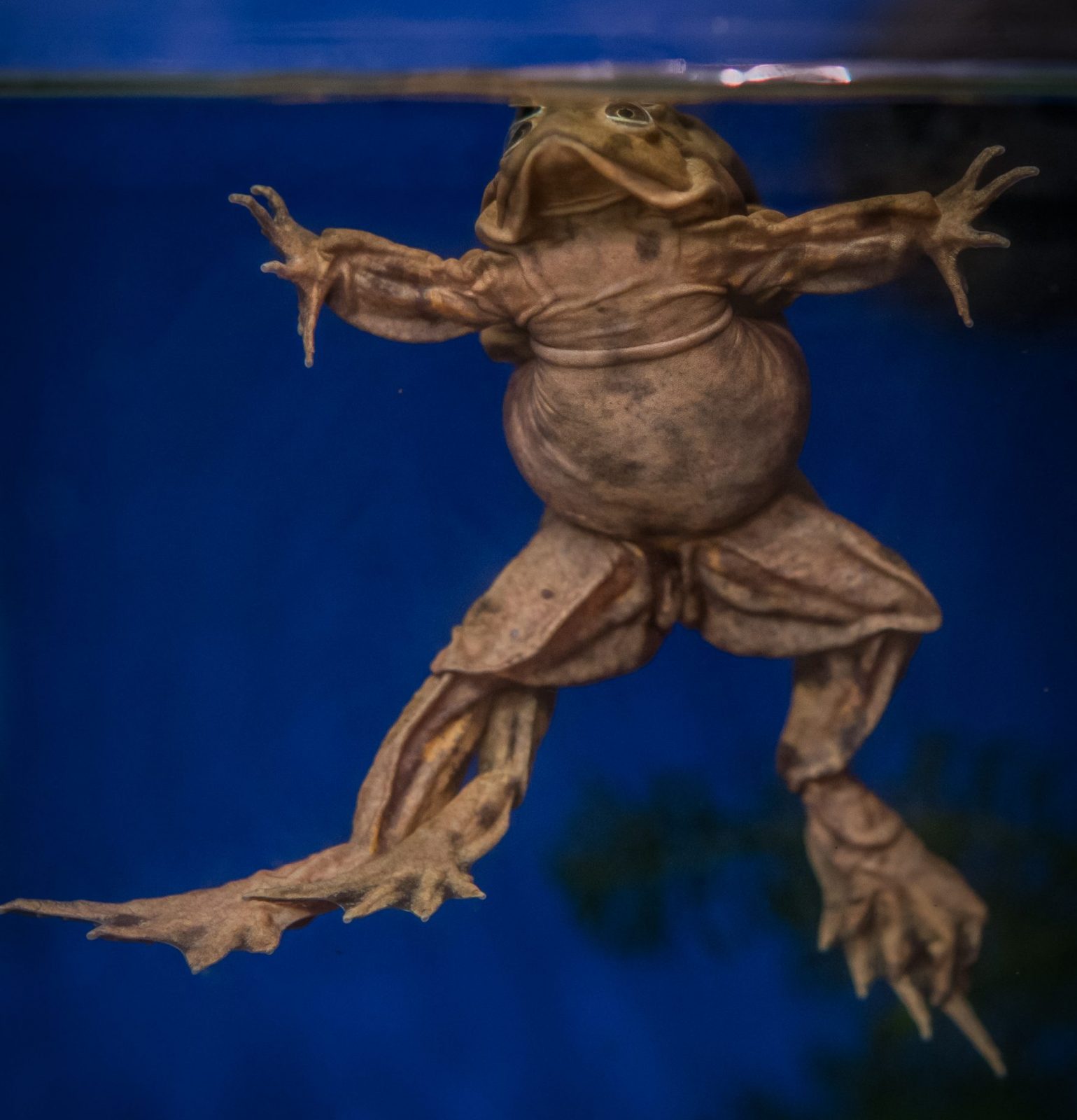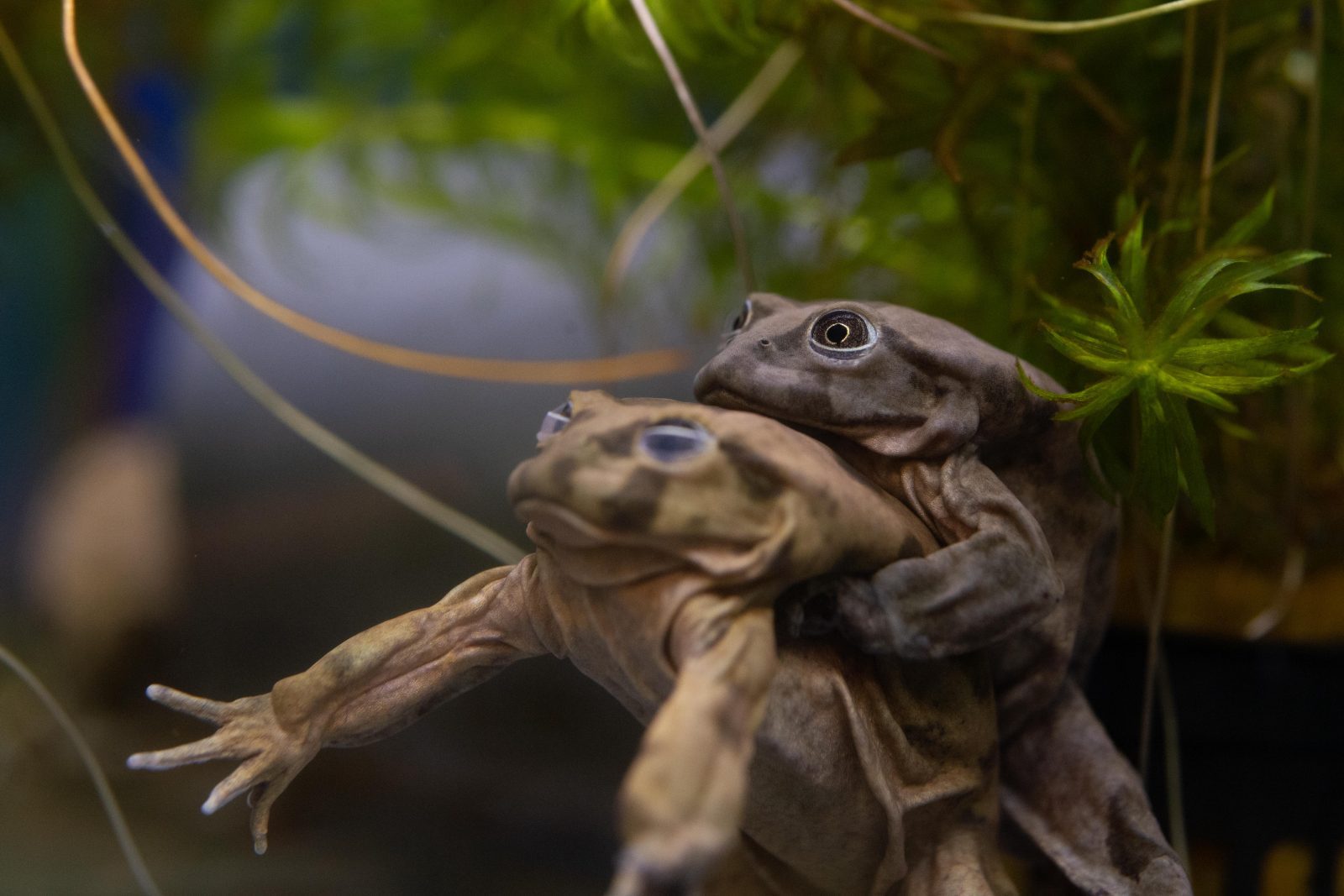News
Rare ‘scrotum’ frogs on the edge of extinction go on display at Chester Zoo
Saggy folds of excessive skin have given the Lake Titicana frog the unfortunate nickname ‘scrotum frogs’.
An endangered frog from South America with a rather unfortunate nickname has gone on display at Chester Zoo for the first time.
The Lake Titicaca frog – which is named after the lake its naturally found in which straddles the border of Bolivia and Peru at around 12,500 feet above sea level – is the world’s largest aquatic frog, and it spends most its life at the bottom of the lake absorbing oxygen from the water using its saggy folds of excessive skin.
This is why it’s been dubbed the ‘scrotum frog’.
And now, twenty of these rare amphibians are being cared for at Chester Zoo, with experts said to be studying their behaviour to try to gather new insights as part of the latest conservation efforts for the species.
The UK’s largest charity zoo is the first in Europe to give a home to this rare species and has now established a European population by sending 130 other frogs to 13 zoos around the continent to help prevent total extinction of the frog.
A combination of pollution, habitat loss, and hunting has devastated the frog’s wild population.
They are listed as endangered by the International Union for the Conservation of Nature (IUCN), with between 50%-80% estimated as having been lost from Lake Titicaca in the last 20 years alone.
In response, nearby researchers set up a rescue centre and began attempts to breed the frogs, before seeking assistance from conservationists at Denver Zoo in America and now, Chester Zoo in the UK.
“To be responsible for setting up the first ever conservation breeding programme in Europe for these fascinating frogs is a real honour for us here at Chester Zoo,” said Dr Gerardo Garcia – Curator of Lower Vertebrates and Invertebrates at Chester Zoo.

“We’re very happy that we can now share our efforts to protect these frogs with the wider public, who will most likely be seeing them for the very first time during their visit the zoo [and] what we need to do now is to build on our knowledge of the species and its biology by learning all about their life cycle, mating behaviours, favoured habitat and ability to tolerate or resist a deadly fungus that is wiping out lots of amphibians, called chytrid.
“We can then harness that valuable information for conservation action in the wild.”
Featured Image – Chester Zoo















